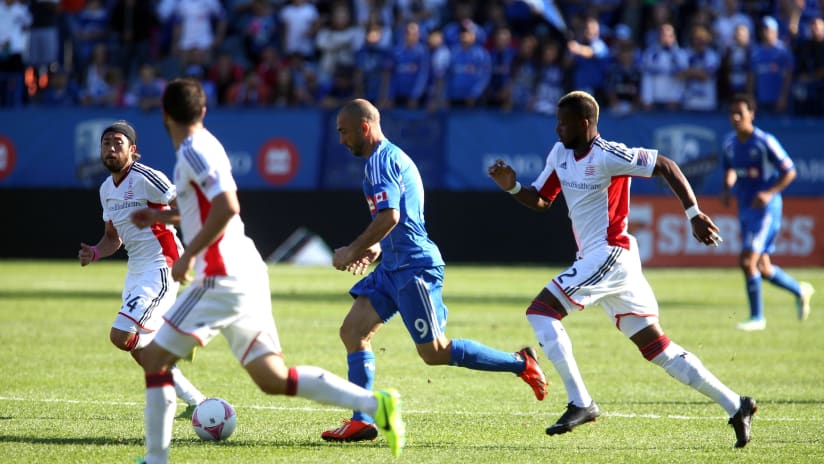Head Coach: Jay Heaps
Formation: 4-1-4-1 or 4-2-3-1
Last 5 results
Draw: 1-1 vs Portland Timbers (August 16)
Win: 1-0 vs Chivas USA (August 23)
Win: 0-3 at Toronto FC (August 30)
Win: 3-1 vs Sporting Kansas City (September 3)
Win: 2-1 vs Chicago Fire (September 6)
Offensive organization
The New England Revolution is one of the hottest teams in the league at the moment. It has won its last four matches and has scored a few along the way. The recent signing of U.S. International Jermaine Jones has helped the Revolution’s attack.
Its build-up play from the back consists of playing to a center back, who looks to play a defensive midfielder who comes to collect, usually Jones. The defensive midfielder will then play a wide ball to an advanced full back or the wide midfielder.
New England likes to send their full backs very high up the pitch when they have the ball. They can do this because the inside winger tucks inside freeing up the space on the flank for the full back to take. Once wide they look for a ball to striker, a combination give and go or a cross.
When circulating the ball, the Revolution do tend to lose quality in their passes when they’re under a bit of pressure. Since they have numbers committed up front, it takes one recovery in the midfielder to catch them on a counter attack.
Offensive transition
New England transition’s up the field fairly quickly. As soon as they win back the ball, they don’t necessarily look to play long over-the-top right away, but will do it if the option is available. The team gets numbers up fast, so if their opponents are too slow to track back, they can take advantage of that.
They did twice against the Sporting Kansas City. Their first two goals involved winning back possession then immediately playing a ball wide for a player on the run. In this example, the Revolution win a ball, play forward to Jones, who then plays long and wide for Teal Bunbury.
Defensive organization
Since New England likes to commit numbers forward, they will usually start defending and apply pressure high up. The high pressure can be easily broken down as it’s individual and not collective. One play will apply pressure and if he gets beat, the next player to step up is alone as well.
If they do have a chance to get organized, the Revs will defend in a 4-5-1 type of zonal block. Their formation is either a 4-2-3-1 or 4-1-4-1, but both are basically just variations of the 4-5-1. The zonal defensive block is not very compact and there are not enough covering defenders. So if a team manages to pass by one player, they can find wholes inside the block to exploit.
Defensive transition
New England’s defensive transition consists of trying to win back the ball right away after losing it. If they lose it while in their opponent’s half, the Revs normally have numbers forward, so they’ll press right away. If the press in broken, they are vulnerable and are exposed for a potential counter attack as they have only three or four players back.


